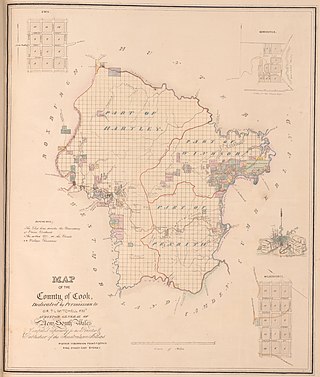
The Eastern Railway is the main railway route between Fremantle and Northam in Western Australia. It opened in stages between 1881 and 1893. The line continues east to Kalgoorlie as the Eastern Goldfields Railway.

York is the oldest inland town in Western Australia, situated on the Avon River, 97 kilometres (60 mi) east of Perth in the Wheatbelt, on Ballardong Nyoongar land, and is the seat of the Shire of York.

York Road was the main road connecting Guildford and York, in Western Australia, during the 19th and 20th centuries.
The Australian colonies and in the nineteenth century created offices involved in dealing with indigenous people in the jurisdictions.

John Nicol Drummond (1816–1906) was an early settler in Western Australia. He became the colony's first 'Inspector of Native Police', and helped to explore the Champion Bay district before becoming one of the district's pioneer pastoralists.
The Daily News, historically a successor of The Inquirer and The Inquirer and Commercial News, was an afternoon daily English language newspaper published in Perth, Western Australia, from 1882 to 1990, though its origin is traceable from 1840.

John Dunn Sr. was a flour miller in the early days of the colony of South Australia; a parliamentarian, philanthropist and a prominent citizen of Mount Barker, South Australia.
Rivett Henry Bland was an early settler and a government administrator in colonial Australia.
Samuel Edward Moore was a prominent early settler in colonial Western Australia, a merchant, pastoralist and a politician.
The Inquirer was a newspaper published in Perth, Western Australia between 5 August 1840 and 27 June 1855, by Francis Lochée. It was a competitor to the Perth Gazette.
The Reverend John Smithies (1802–1872) was a Wesleyan Methodist missionary who served in Newfoundland, the Swan River Colony of Western Australia, and Tasmania.
John Henry Monger Snr (1802–1867) arrived in Western Australia as an assisted migrant in 1829. After a short period running a mill at what became Lake Monger, he established a hotel and store in York and went on to become one of the richest men in the colony.

The Electoral district of Counties of Cook and Westmoreland, also known as the United Midland Counties of Cook and Westmoreland, was an electorate of the New South Wales Legislative Council at a time when some of its members were elected and the balance were appointed by the Governor.
The 1848 New South Wales colonial election was held between 29 July and 2 August. No candidates were nominated for Port Phillip as a result of the campaign for independence from New South Wales, and a fresh writ was issued for an election on 3 October.
Henry Landor was the first medical superintendent of the Asylum For The Insane, London, Ontario, which was built to his specifications. He was one of those at the forefront in North America of the movement for moral treatment of mental patients. Earlier in life, he was a settler, farmer, physician, scientist, and explorer in Western Australia, and then he became a naval surgeon in South Africa.
Walkinshaw Cowan was private secretary to Western Australian Governors John Hutt, Andrew Clarke and Frederick Irwin, then in 1848 he became Guardian of Aborigines and a justice of the peace, and then resident magistrate at York from 1863 to 1887.
Cowits was Western Australia's first Aboriginal policeman, and was a member of a number of early exploratory expeditions.
Samuel Smale Craig (1802-1864), and his wife Mary were settlers to York, Western Australia who arrived in 1850 and then built the Castle Hotel, which was then run by the Craig family for 137 years.
Eliza Brown was an early settler in colonial Western Australia whose letters to her father record the hardships of her family. She accompanied an exploration to Champion Bay in 1851, her account of the journey being published.






